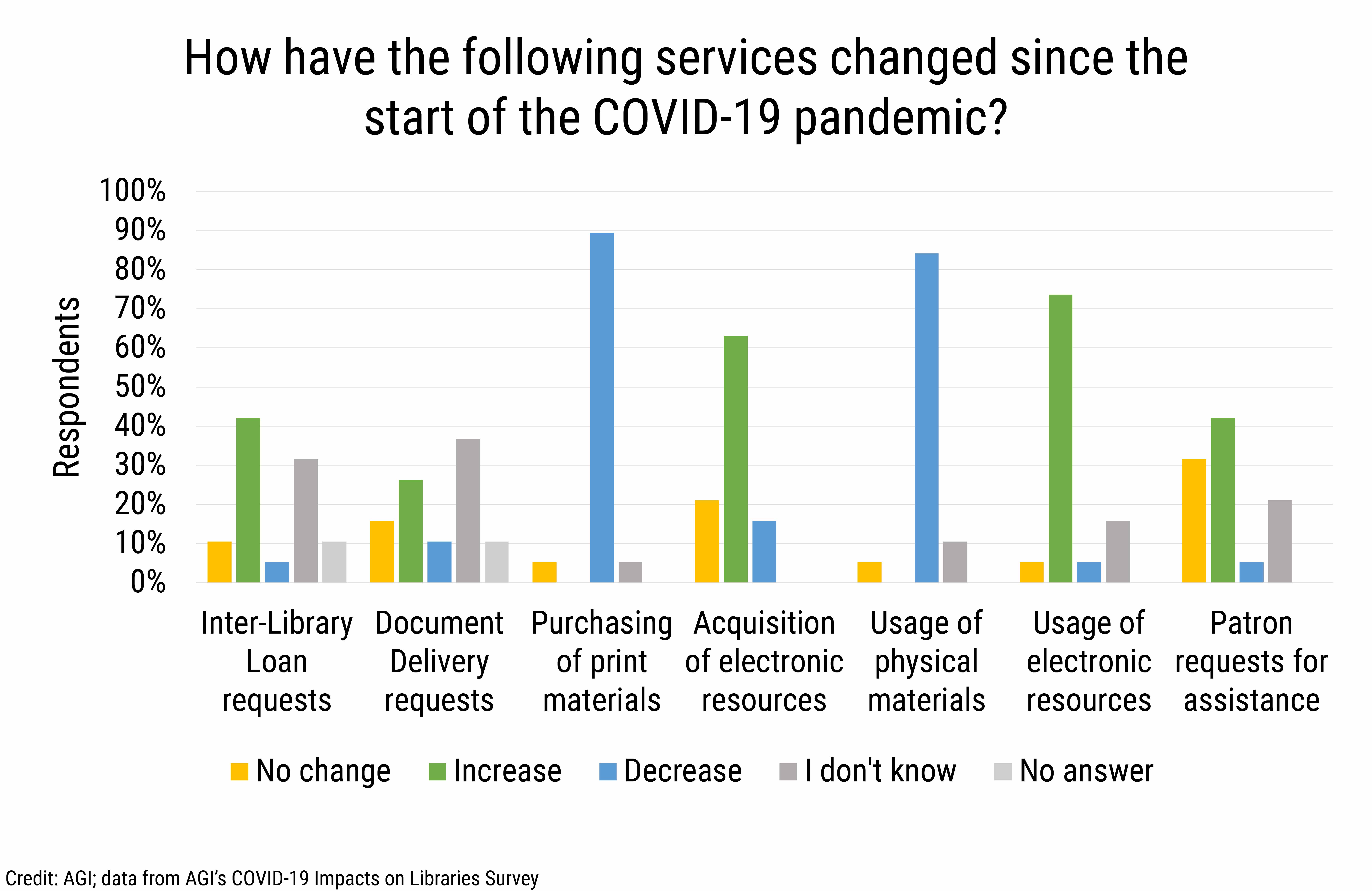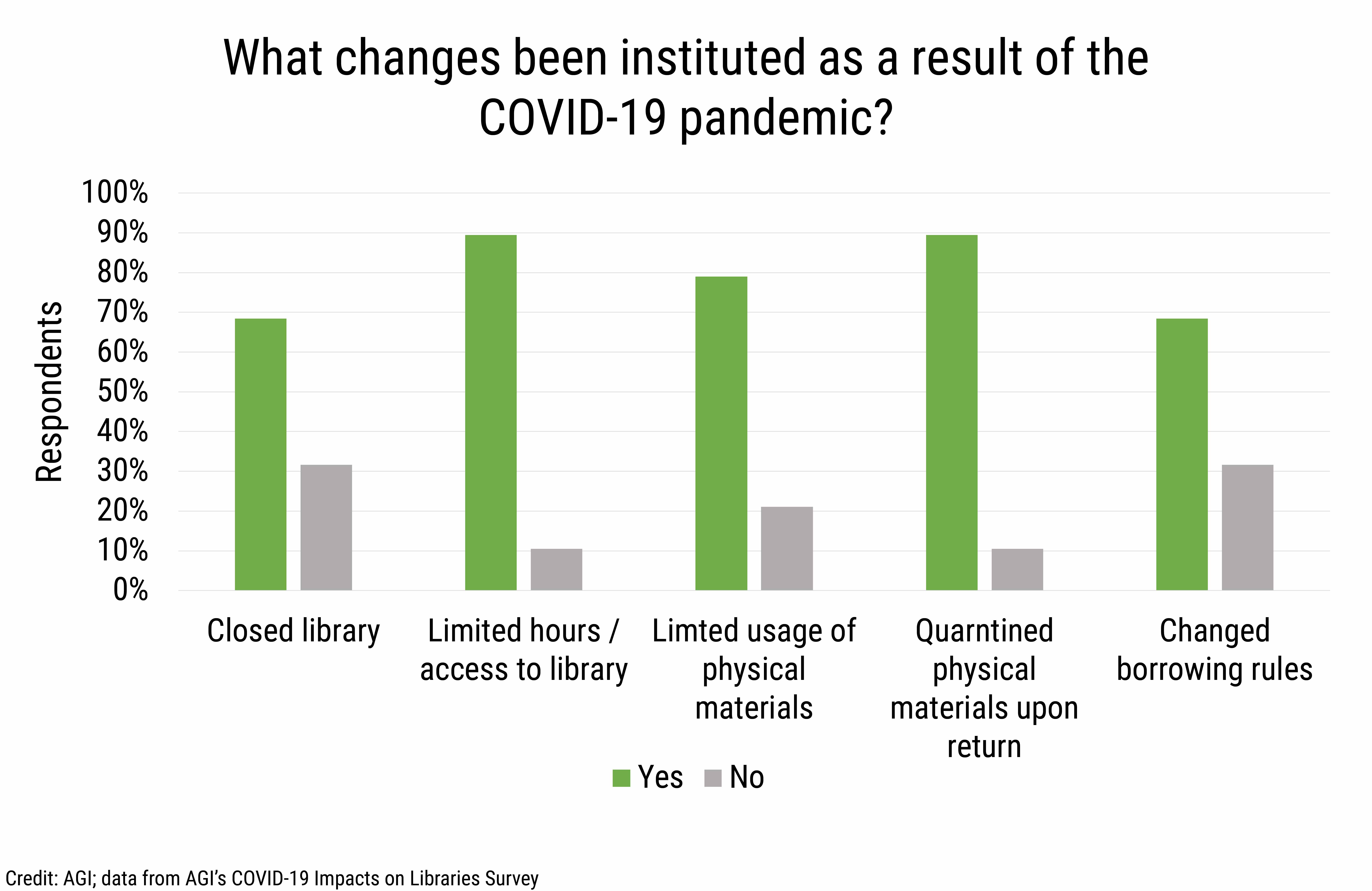Data Brief 2020-030 | December 4, 2020 | Written and compiled by Leila Gonzales and Christopher Keane, AGI, December 2020
Download Data Brief
COVID-19 Impacts on Libraries
We invited library staff to participate in a short ad hoc survey to
better understand the impacts of COVID-19 on libraries. The majority
(89%) of survey respondents were from university or college libraries,
and 10% of respondents were from either government libraries or special
libraries (5% of respondents each).
Library Services
The largest change in library services since the start of the pandemic
has been a decrease in purchasing and usage of print and physical
materials, with 90% of respondents reporting a decrease in the
purchasing of print materials and 84% of respondents reporting a
decrease in the usage of physical materials. Most respondents reported
increases in the usage and acquisition of electronic resources (74% and
63% respectively). In addition, 42% of respondents reported increases in
inter-library loan requests and just over one-quarter of respondents
reported an increase in document delivery requests. Furthermore, 42% of
respondents reported increases in patron requests for assistance,
including a noted increase in requests for and participation in
workshops and tutorials.

DB_2020-030_chart01 Change in library services during COVID-19. (Credit: AGI, data from AGI's COVID-19 Impacts on Libraries Survey)
AGI
Other changes to library services included the creation of short video
tutorials to assist patrons with accessing services and with library
outreach, and increase in time needed to plan remote instruction,
closure or limitations to special collections, virtual reference labs,
and archives, and limited onsite reference assistance.
Facility Impacts
Facility impacts were reported by most respondents, with the most
commonly reported impacts being limited hours and access to the library
building, the quarantining of physical materials upon return, and
limited usage of physical materials. Other facility changes implemented
as a result of the pandemic included new delivery options, including
digitization of print materials on demand, and implementation of a
paging system that routes calls from library branches that are closed to
the main library branch location which is open.

DB_2020-030_chart02 Facility changes to libraries during COVID-19. (Credit: AGI, data from AGI's COVID-19 Impacts on Libraries Survey)
AGI
Other impacts to libraries related to the COVID-19 pandemic range from
budget stresses, staffing impacts, and technology impacts. Budget
impacts included restricted budgets resulting in reduced purchasing and
processing of physical materials and digital textbooks, and also hiring
freezes, staff quarantines, furloughs and layoffs. Staffing impacts
included restricted on-site staffing which has resulted in backlogs of
cataloging and archiving of materials and feelings of inequitable
conditions among staff. In addition, respondents reported reduction in
the use of student employees, as well as the need for staff to be
flexible in assuming different roles and to adapt to working from home
with online technology applications. Technology impacts include
hardware and software issues for staff who are working from home and
reduced levels of communication among staff. Other impacts included
concerns over the ultimate disposition of library and physical
collections space.